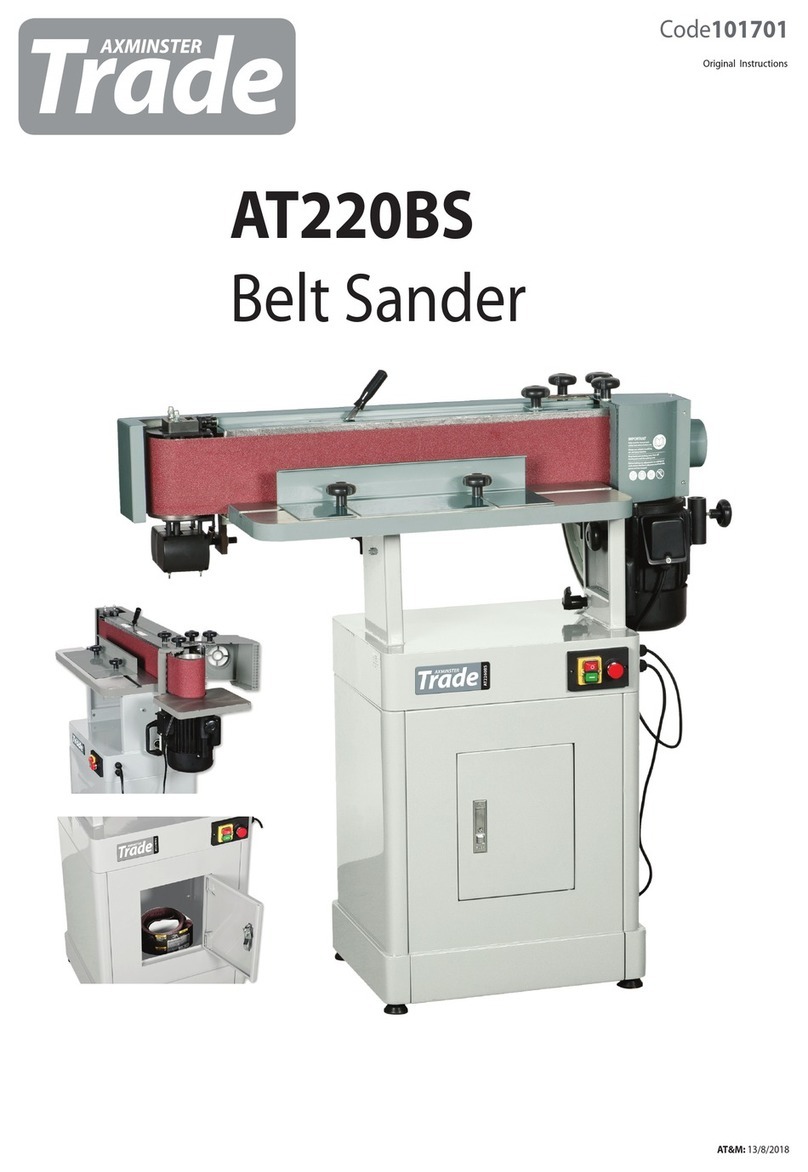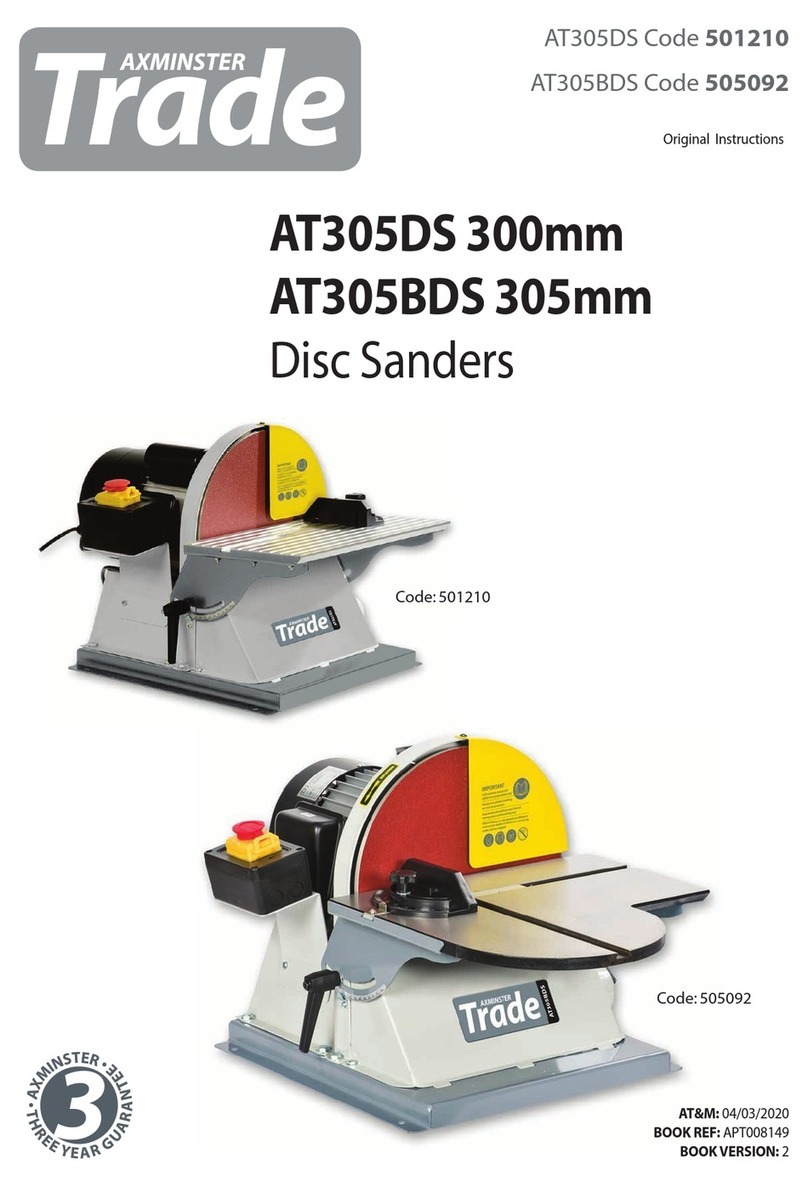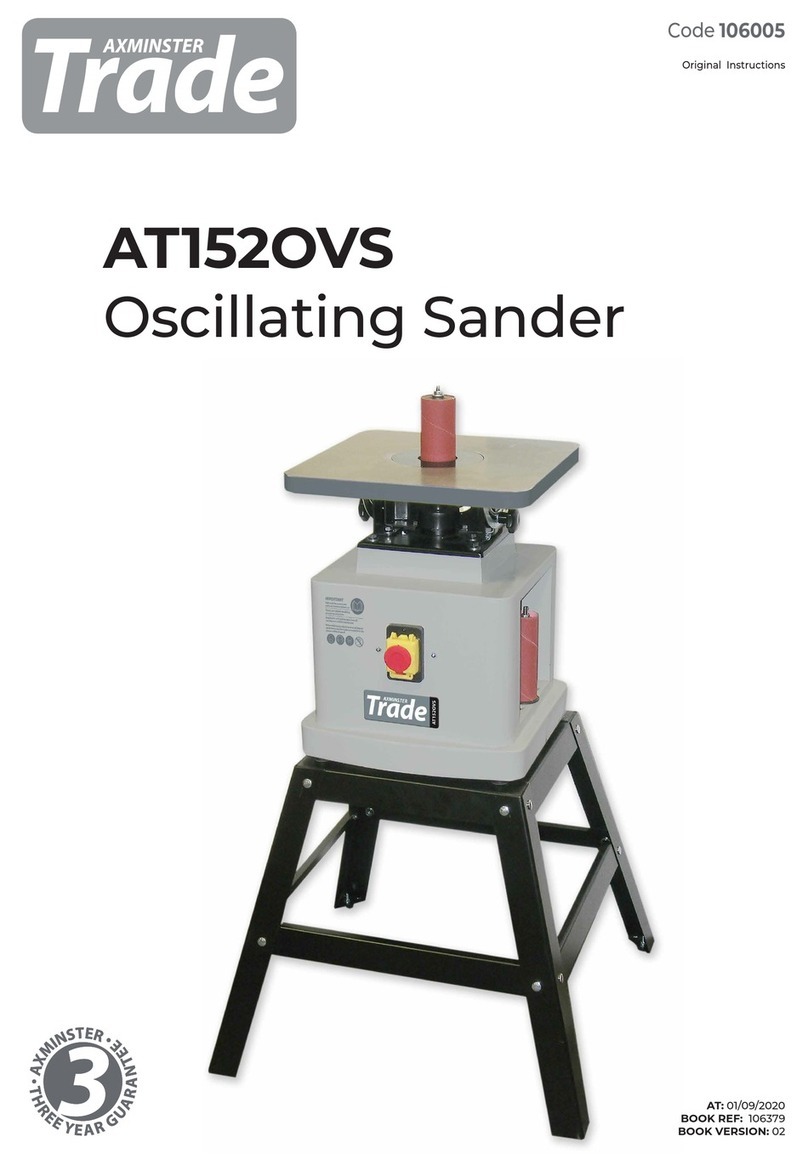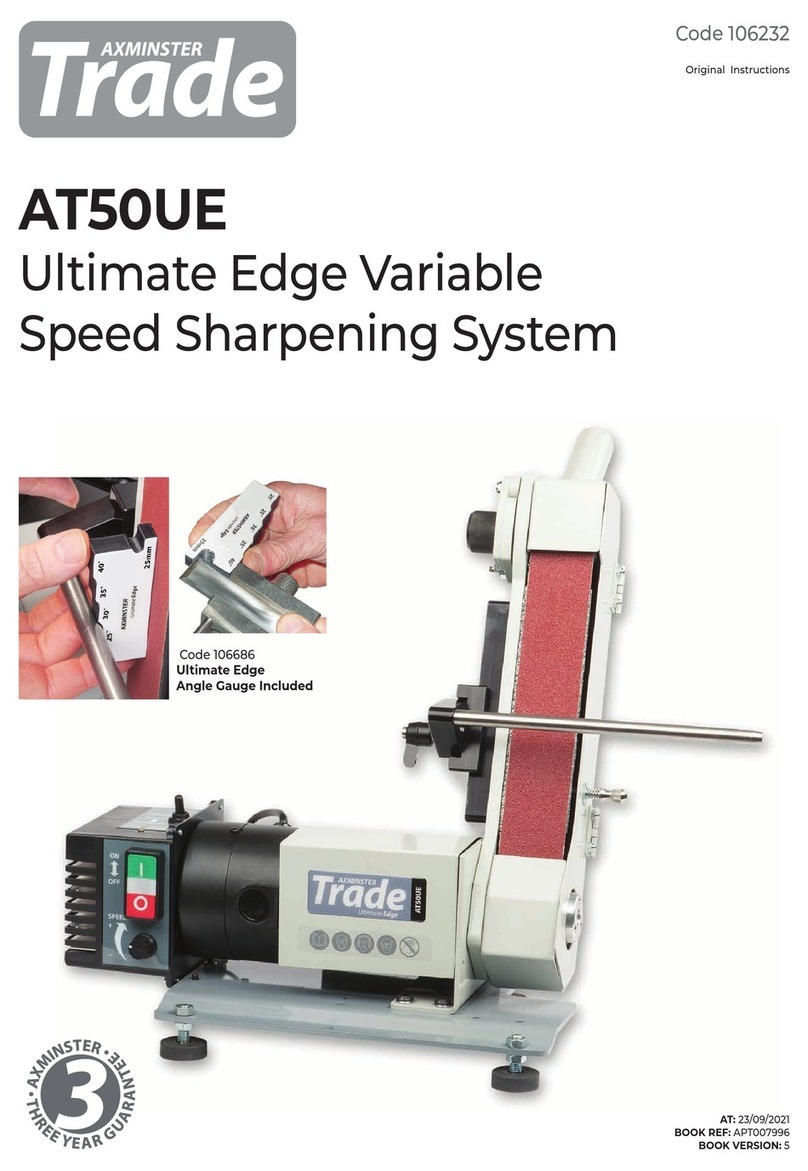
Specific to Sanding Machines
5
Once the sander is mounted, carry out any setting
operations,(mitre, tilt..?), and remove all tools used in the
setting operations (if any) and place safely out of the way. If
you are working long lengths of material arrange for extra
support beyond the boundary of the machine, and check
you have sufficient room to manoeuvre the material through
all the operations you will wish to carry out.
It is good practice to leave the machine unplugged until
work is about to commence, also make sure to unplug the
machine when it is not in use.Always disconnect by pulling
on the plug body and not the cable.
After fitting a new sanding disc,it is good practice to lightly
sand across the left side of the disc with a reasonable sized
(20mm x 50mm) piece of timber to make sure the sanding
disc is correctly ‘seated’on the disc.The sanding action will
press the sanding disc firmly back against the disc itself.
It is not good practice to wear gloves whilst sanding as one
tends to lose the‘feel’of the work piece/sander contact, but
obviously this removes the safety barrier between your
fingers and the sanding surface. Remain focused and
exercise caution whilst sanding.
DO NOT sand very small pieces of work with bare hands; try
to construct some form of holder.
MAKE SURE you are comfortable before you start work,
balanced,not reaching etc.If the work you are carrying out is
liable to generate excessive grit or dust or chips,wear
the appropriate safety clothing, goggles, masks etc., If the
work operation appears to be excessively noisy, wear ear-
defenders.If you wear your hair in a long style,wearing a cap,
safety helmet, hair net, even a sweatband, will minimise the
possibility of your hair being caught up in the rotating parts
of the machine,likewise, consideration should be given to
the removal of rings and wristwatches, if these are liable to
be a ‘snag’ hazard.
DO NOT work with cutting/abrasive tools of any description
if you are tired, your attention is wandering or you are being
subjected to distraction. A deep graze,a lost fingertip or
worse,is not worth it!
DO NOT use the machine within the designated safety areas
of flammable liquid stores or in areas where there may be
volatile gases.There are very expensive, very specialised
machines for working in these areas,THIS IS NOT ONE OF
THEM.
CHECK that sanding surfaces are still sufficiently abrasive
to carry out the work you intend.Sanding belt cleaning
sticks are an efficient method of prolonging the life of
the belts and discs, and will also maintain their operating
performance.
CHECK that the belts or discs are undamaged; torn edges
can pick up on the work piece and will cause the medium to
tear, often very rapidly with accompanying sharp flapping
edges.
ALWAYS offer the work piece to the belt/disc so that the
motion carries the work against the restraining surface, (i.e.
the work stop or the table,(use the left hand side of the disc).
DO NOT press too heavily against the sanding surface, all
this will do is slow the sander down.Remember, sanders
work by removing small particles of material quickly and
heavy pressure works adversely to the cutting process,
further, it will accelerate the rate of‘clogging’of the abrasive
surfaces, rendering the machine less efficient.
If you are attempting to sand inside curves (over the ‘tracking
drum’) do not press at all,other than to keep the work piece
in contact with the surface,any pressure could upset the
tracking geometry. As there is no cushioning effect to the
belt passing around the drum, expect an added vibration
and compensate for it.
Sanding of certain types of timber may make the fitting
of dust extraction mandatory in order to comply with the
directives of the HSE. However, even if it is not mandatory,
it is strongly recommended that you consider fitting dust
extraction. It will certainly reduce the level of dust and grit,
and as it helps to remove the waste quicker, will certainly
prolong the longevity of the abrasive.
Above all, OBSERVE…. make sure you know what is
happening around you,and USE YOUR COMMON SENSE.



































